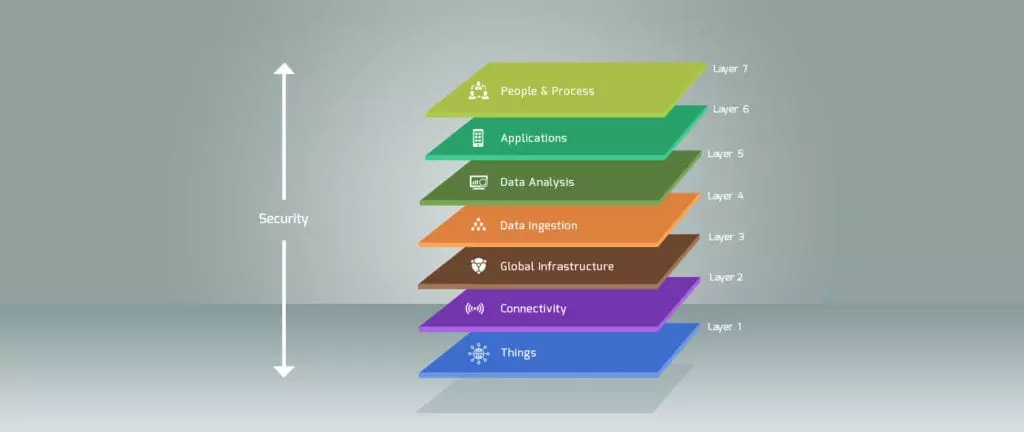The Internet of Things (IoT) is all about networking of physical objects powered with embedded technology to sense and communicate the data about the internal or external environment. With 50 billion devices estimated to be connected by 2020, IoT has opened infinite possibilities of real world applications. QuEST Global is ushering a new era for its customer through the Internet of Things. The power of IoT is bringing in operational efficiency, information for decision making and a connected ecosystem, which will enable each device, equipment or machinery to be connected to the processing power of the cloud.
The QuEST Edge
QuEST extends its existing set of niche engineering capabilities to enable IoT solutions for its customers. These capabilities range from understanding of end points / sensors, embedded systems, ecosystem security, cloud integration, data analytics to building end user applications. Our experience in building IoT solutions spans across industry segments like Healthcare, Energy, Agriculture, Consumer IoT, Automotive, and Industrial IoT. Some of these solutions support devices powered by Intel chipset platform. In Automotive segment specifically, QuEST has developed a solution that connects smartphone to the IVI device powered by Intel Atom processor.
QuEST is also part of leading IoT communities like LoRa Alliance, Industrial Internet Consortium (IIC), Intel IoT Solution Alliance (ISA) – which gives us an edge to gain deeper domain and specifications insights for seamless implementation of IoT solutions.

At this stage, we find out key information like gateway type and how the things are powered. What are the capabilities of these endpoint device? These sensors and end point devices allow us to define other protocols.
For connectivity related tasks, we define the best suitable protocols along with range of connectivity for the endpoint things. The connectivity needs to be secure over the network so that rogue attacks can be prevented. Some of the components that we work on are RS-232, ODB2, PLC, ModBus, Wireless, USB & SPI to name a few.
The global infrastructure consists of multiple components like Cloud, Server, Communication layer, Transport & Link protocol layer. These combined ensure that the IoT infrastructure is robust. It is critical to have a predictive usage pattern for the IoT infrastructure. Some of the core expertise of QuEST lies in the cloud server architecture, Azure IoT, AWS, Power BI & Hybrid Cloud. For link protocol layer we have earlier worked on Wi-Fi 802.11, Bluetooth, BLE, ZigBee, AFid, Dash7, Z-Wave & CDMA to name a few. Other expertise in infrastructure include IPv4, IPv6, MQTT, CoAP, DDS6LoWPAN, XMPP, AMCP etc.
It is key for any IoT setup to define how the data is getting ingested. These systems also need to ensure that the data is moving reliably. We define how the relevant data is captured, where is it stored & how is it organized. Some of the technologies that we have worked on are Scribe, RabbitMQ, Flume, Kafka, Storm, Thrift & Fluentd.
As the data starts to get accumulated, it is very important to analyse and infer the key outcomes from it. The data abstraction function focuses on rendering data and its storage to enable easier comprehension of the data for the application. Some of the core technologies that we have worked on here are Hadoop, HBase, Cassandra & MongoDB
This is where all the information interpretations happen. At QuEST, we have extensive experience in creating endpoint applications for various verticals. We create applications for device management, mobile applications & business intelligence and analytics.
For the key stakeholders in the IoT ecosystem, QuEST defines and delivers organizational hierarchy and processes. Identity management is key to this, thus defining who gets access to what data with effective governance of the IoT ecosystem.
